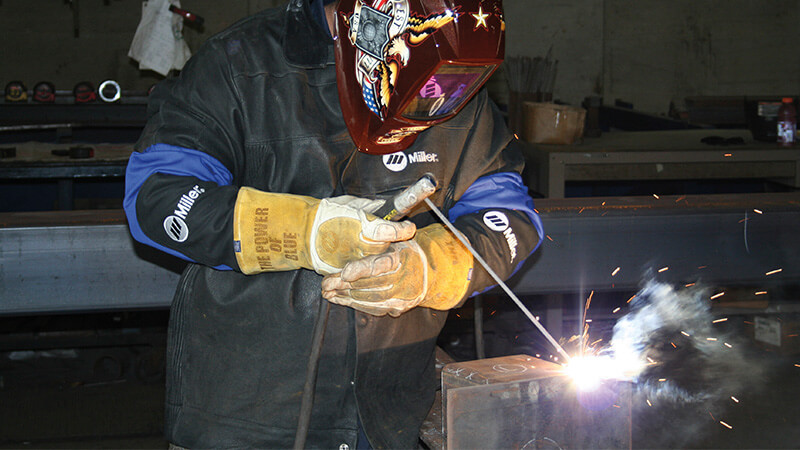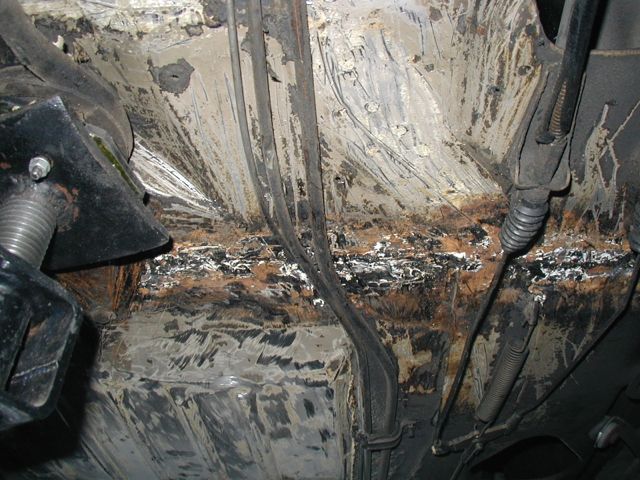Common Welding Repair Work Issues and How to Address Them Properly
Welding fixings typically come across a series of problems that can jeopardize the honesty of the last product. Usual problems include inadequate penetration, porosity, and misalignment, to name a few. Each issue presents one-of-a-kind challenges that need particular methods for resolution. Comprehending these problems is vital for welders intending to boost their end results and skills. This discussion will explore these usual welding repair work issues and effective techniques to address them.
Insufficient Penetration
Insufficient infiltration happens when the weld steel fails to fully fuse with the base product, causing weak joints and possible architectural failings. This issue typically originates from insufficient warm input, inaccurate electrode angle, or incorrect welding rate. Welders might encounter insufficient penetration as a result of a miscalculation of the essential criteria for a details product thickness or type. Additionally, contamination on the base material's surface area can prevent reliable bonding, intensifying the issue. To attend to poor penetration, welders should assure ideal settings on their equipment and keep a clean work surface. Routine inspection of welds is recommended to identify any shortages early, permitting timely improvements and the avoidance of endangered architectural honesty in welded assemblies.
Porosity
Porosity is a typical defect in welded joints that shows up as little gas bubbles caught within the weld metal. This problem can compromise the stability of the weld, resulting in decreased toughness and potential failing under anxiety. Belgrade Fabrication. Porosity typically arises from contamination, dampness, or inappropriate welding methods, which enable gases to escape into the molten weld pool. To deal with porosity, welders must ensure correct surface prep work, keep a tidy functioning setting, and make use of ideal welding specifications. Additionally, choosing the best filler product and securing gas can reduce gas entrapment. Routine evaluation and testing of welds can help determine porosity early, assuring prompt restorative actions are taken, consequently maintaining the high quality and dependability of the bonded structure
Misalignment
Misalignment in welding can emerge from different factors, including incorrect configuration and thermal growth. Recognizing the origin triggers is crucial for efficient resolution. A number of correction methods are offered to realign elements and guarantee architectural integrity.
Sources of Misalignment
Welding misalignment often stems from a variety of underlying issues that can compromise architectural honesty. One main reason is inappropriate fit-up of elements prior to welding, which can bring about gaps and unequal surface areas. Variations in thermal development during the welding procedure can likewise lead to distortion, particularly if the products being signed up with have different coefficients of development. In addition, inadequate clamping and fixturing might fail to hold elements securely in position, bring about activity during welding. Improperly conserved devices, including welding machines and tools, may present disparities in the weld bead, additional adding to misalignment. Operator error, stemming from not enough training or experience, can additionally play a substantial role in creating misaligned welds.

Correction Strategies Readily Available
Addressing misalignment effectively requires a mix of rehabilitative methods customized to the specific issues available. One typical technique is using fixtures or jigs to hold components in the right placement throughout welding, guaranteeing consistent positioning. In addition, pre-heating the products can assist minimize distortion and boost fit-up. For considerable misalignment, mechanical adjustment strategies, such as making use of hydraulic jacks or clamps, can be employed to deal with the placement before welding. Post-weld warmth treatment may also be necessary to eliminate anxieties triggered by imbalance. Mindful inspection and change throughout the configuration phase can protect against misalignment issues from ending up being considerable issues, promoting a smoother welding procedure and boosting total structural integrity.
Distortion
Distortion is an usual difficulty in welding that can arise from various aspects, consisting of uneven cooling and heating. Recognizing the reasons of distortion is essential for applying efficient prevention strategies. Resolving this problem not only boosts architectural honesty but additionally enhances the overall quality of the weld.
Root causes of Distortion
When subjected to the extreme heat of welding, materials typically undertake modifications that can cause distortion. This phenomenon primarily occurs from thermal development and tightening throughout the welding procedure. As the weld area warms up, the product increases; upon air conditioning, it acquires, which can develop interior anxieties. In enhancement, unequal heating across a workpiece can aggravate these stress and anxieties, resulting in bending or flexing. The kind of material also plays a considerable role; metals with varying thermal conductivity and coefficients of expansion may react in a different way, resulting in unpredictable distortions. Bad joint layout and poor fixturing can add to misalignment throughout welding, boosting the possibility of distortion. Understanding these reasons is important for efficient welding repair work and avoidance methods.
Avoidance Techniques
Reliable avoidance techniques for distortion during welding concentrate on regulating warm input and guaranteeing correct joint design. Keeping a consistent warm input helps to minimize thermal development and tightening, which can bring about distortion. Utilizing strategies such as pre-heating the work surface can likewise decrease the temperature level gradient, promoting consistent heating. Additionally, selecting appropriate joint designs, such as T-joints or lap joints, can improve security and reduce tension focus. Implementing correct fixturing to safeguard the work surfaces in place additionally aids in maintaining placement throughout the welding process. Staggered welding series can disperse heat more equally, preventing local distortion. By using these techniques, welders can significantly lower the likelihood of distortion and improve the total high quality of their welds.
Breaking
Splitting is a typical problem run into in welding repair services, often resulting from numerous elements such as improper cooling rates, product choice, or insufficient joint prep work. The event of splits can substantially endanger the stability of the weld, bring about possible failings throughout operation. To resolve this concern, welders need to initially assess the origin, making certain that materials work and properly selected for the specific application. In addition, controlling the air conditioning rate during the welding process is necessary; rapid cooling can generate stress and cause splitting. Proper joint design and prep work additionally add to reducing the danger. Executing these methods can boost weld quality and longevity, eventually minimizing the probability of fracturing in finished weldments.
Insufficient Blend
A considerable concern in welding repair work is insufficient combination, which happens when the weld metal does not appropriately bond with the base material or previous Click This Link weld passes - Belgrade Welding. This flaw can bring about weak points in the joint, potentially jeopardizing the stability of the welded structure. Elements adding to incomplete blend consist of not enough warm input, incorrect welding strategy, and contamination of the surfaces being joined. To resolve this concern efficiently, welders ought to guarantee proper pre-weld cleansing and surface preparation, in addition to adjust their welding criteria to achieve adequate infiltration and blend. Regular evaluation throughout the welding process can additionally help recognize insufficient blend early, permitting prompt rehabilitative measures to improve the general top quality of the weld
Overheating
While welding repair services can improve structural honesty, find more overheating provides a substantial difficulty that can bring about product deterioration. Extreme warmth during welding can change the mechanical residential or commercial properties of steels, resulting in reduced stamina, increased brittleness, and warping. This phenomenon is particularly essential in high-stress applications where structural reliability is paramount. Recognizing overheating can involve visual evaluations for staining or distortion, in addition to keeping track of temperature throughout the welding process. To reduce the dangers related to overheating, welders need to utilize suitable methods, such as controlling warm input, readjusting traveling rate, and using suitable filler materials. Additionally, executing pre- and post-weld warmth therapies can aid recover product residential properties and enhance the overall high quality of the repair work, making sure lasting performance and safety.
Regularly Asked Questions
What Are the Typical Indications of a Welding Problem?

Just How Can I Evaluate My Welds for Top quality?
To examine welds for high quality, one can use visual assessments, ultrasonic testing, and radiographic methods. Each method assures architectural honesty, identifies defects, and validates adherence to specified requirements, inevitably enhancing the integrity of the welded joints.
What Security Preventative Measures Should I Take While Welding?
When welding, one need to prioritize safety by putting on proper individual protective equipment, making certain correct ventilation, securing combustible materials away, keeping a tidy visit the website workspace, and recognizing environments to avoid mishaps and injuries.
Can I Fix a Weld Without Redesigning the Entire Joint?
Fixing a weld without redoing the entire joint is feasible, depending on the damage (Montana Mobile Welding and Repair Welding). Strategies such as grinding, adding filler material, or making use of a welding procedure can properly address certain defects while protecting the bordering structure
What Devices Are Necessary for Effective Welding Services?
Vital tools for reliable welding repairs consist of a welding maker, cable brush, grinder, protective equipment, clamps, and filler products. Each tool plays an important duty in making sure high quality and security throughout the fixing procedure. Porosity commonly arises from contamination, moisture, or incorrect welding methods, which permit gases to escape right into the liquified weld pool. Inadequately kept tools, consisting of welding makers and tools, may introduce inconsistencies in the weld bead, more contributing to imbalance. When subjected to the intense warm of welding, products commonly undertake adjustments that can lead to distortion. Fracturing is a common concern come across in welding repair work, typically resulting from different aspects such as improper air conditioning prices, material choice, or insufficient joint preparation. A significant concern in welding repair services is insufficient blend, which takes place when the weld steel does not properly bond with the base product or previous weld passes.